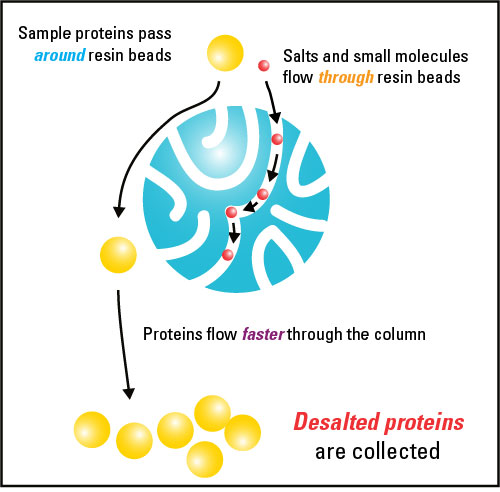
Desalting and buffer exchange are methods to separate soluble macromolecules from smaller molecules (desalting) or replace the buffer system used for another one suitable for a downstream application (buffer exchange).[1] These methods are based on gel filtration chromatography,[2] also called molecular sieve chromatography, which is a form of size-exclusion chromatography. Desalting and buffer exchange are two of the most common gel filtration chromatography applications, and they can be performed using the same resin.
Desalting and buffer exchange both entail recovering the components of a sample in whatever buffer is used to pre-equilibrate the small, porous polymer beads (resin). Desalting occurs when buffer salts and other small molecules are removed from a sample in exchange for water (with the resin being pre-equilibrated in water). Buffer exchange occurs when the buffer salts in a sample are exchanged for those in another buffer.
- ^ Porath, J; Flodin P (13 June 1959). "Gel Filtration: A method for desalting and group separation". Nature. 183 (4676): 1657–1659. Bibcode:1959Natur.183.1657P. doi:10.1038/1831657a0. PMID 13666849. S2CID 32287460.
- ^ Hagel, L (May 2001). "Gel-filtration chromatography". Curr Protoc Mol Biol. Chapter 10: Unit 10.9. doi:10.1002/0471142727.mb1009s44. PMID 18265066. S2CID 43677846.